Black Australorp chickens are a great heritage breed of chickens. They are amazing egg layers and can also be raised for their meat. They are friendly, calm, and easy birds to raise. In this post, you’ll learn everything that you need to know about Black Australorp Chickens.
After raising chickens for a couple of years for both meat and egg production, I decided that I would like to find a chicken that would make my life a bit easier.
I was looking for a heritage breed of chicken that will go broody and hatch their own eggs and take care of their own chicks. I was looking for a breed that I can raise for both egg production and meat production, and I was looking for a friendly, calm, non-aggressive bird since I have little kids.
After some research I found the Black Australorps and decided to give them a try. I’ve never owned another breed of chickens since then. They answer all of the above requirements and more.
Black Australorp Chickens…
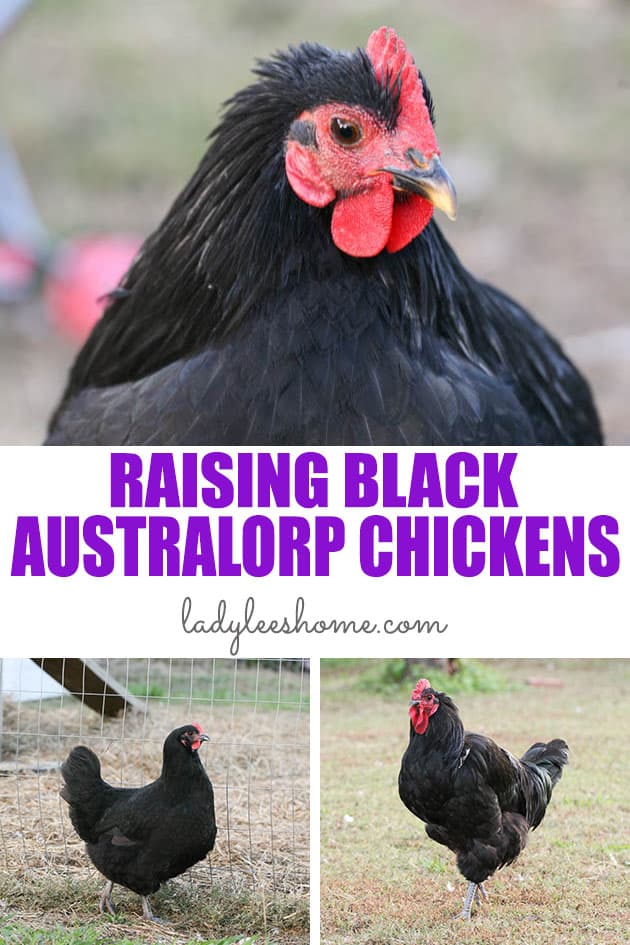
In this post, I want to give you all of the information that you need to know about Black Australorp chickens so you can make the decision if they are right for you.
Here is what we are going to go over in this post:
History of the Black Australorp…
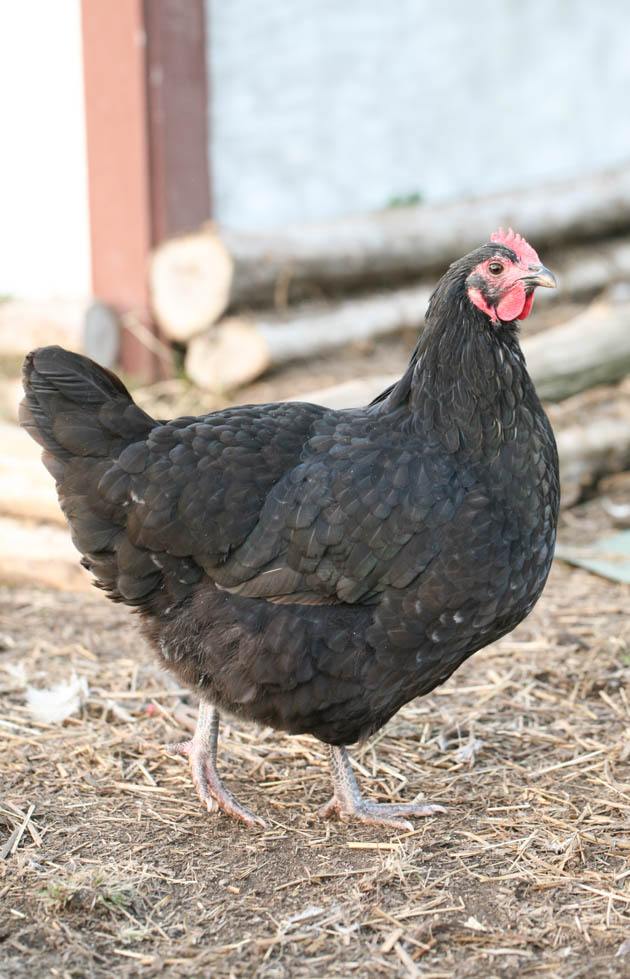
In the early 1900’s, Australian breeders set out to develop a large breed of chicken that would lay a ton of eggs and have a secondary purpose of meat production.
They crossed William Cook’s Orpingtons with Rhode Island Reds, Minorcas, White Leghorn, Langshan and Plymouth Rocks.
The result was a large bird that is a phenomenal and consistent egg layer of quality, medium-size eggs.
Black Australorps were introduced to the U.S. during the 1920’s after a number of hens broke world records of egg production (one hen laid 364 eggs in 365 days without supplemental light during the winter!!).
The American Poultry Association only recognizes the Black Australorps (black is the original color), however, The Australian Poultry Society recognizes the black, blue, and white varieties.
Black Australorp Appearance…
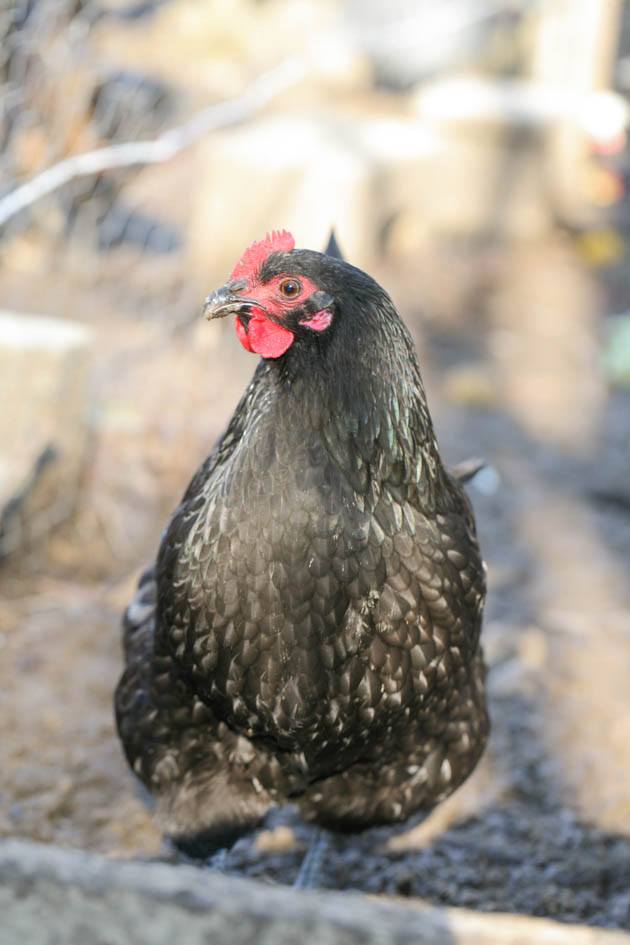
Black Australorps are large birds. An adult hen can weigh between 6-8 pounds and an adult rooster can weigh between 8-10 lb. They have close-fitting, soft feathers that have a beautiful green shine to them (some of the roosters also have a purple shine).
Their wattles, earlobes, and comb are all red with the comb standing upright and have seven points or fewer.
Their skin and the bottom of their feet are white. The legs are bare and the skin of the legs and four toes is black. Their eyes are black and their beak is dark.
Black Australorp chickens live between 6 to 10 years.
Black Australorp Characteristics…
The Black Australorps are easy-going (yet active), calm, and friendly birds. They are easy to catch and pet, they are non-aggressive, and they are well adapted to confinement even though, like any other chicken, they’ll be happy to free-range.
If given the option to free-range, they are great foragers. They aren’t lazy and will happily roam around and clean your lawn of all kinds of bugs and crawlers.
They get along very well with other farm animals like dogs, goats, ducks, and so on (on my homestead they share a fence with guinea fowl, Muscovy ducks, and Lamancha goats).
The Black Australorp Rooster…
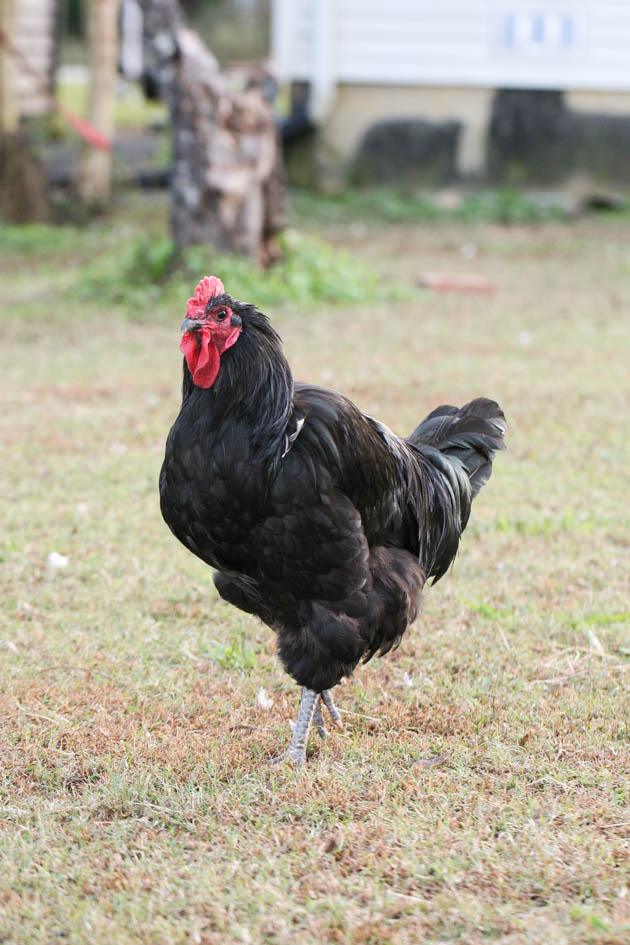
Black Australorp roosters are large, strong, active, and very protective of their hens. They generally aren’t aggressive towards humans and if you keep enough roosters per hens they aren’t aggressive towards each other either.
In my years of raising Black Australorps I’ve only come across one mean rooster. Other than that guy all of our Black Australorp roosters are very calm and friendly, however, they are very protective of the hens especially from other farm animals.
If you let them free-range, you’ll notice that the roosters stay very close to the hens at all times. They are alert and do a great job in keeping the hens safe.
I find that the ideal is one rooster for 8-10 hens to keep them from fighting each other. However, I now have two roosters fenced with 10 hens and they are still doing great and rarely fight with each other.
Black Australorp roosters crow just like any other rooster. During the day they are generally quiet but they love to announce the day early in the morning. They also get loud if there is any danger to the hens.
The Black Australorp Hen…
Black Australorp hens are great egg layers and great mothers. If you leave the eggs in the coop and let them make a nest they will go broody easily during the spring and summer months.
A Black Australorp hen will sit on her nest for 28 days without leaving it for a minute! After 28 days the chicks will hatch and the mother will take great care of them for the next few weeks until they can fend for themselves.
Maybe one of the best things about Black Australorp hens is that they are very very friendly even while they sit on their nest. You can easily add or remove eggs from under a broody hen (you can add eggs from other chickens to their nest). They don’t peck or move or stop sitting on the nest even if you stick your hands under them.
They are also great family birds. My little kids will generally leave the roosters alone but they can easily catch a hen and sit and pet her.
Black Australorp Eggs…
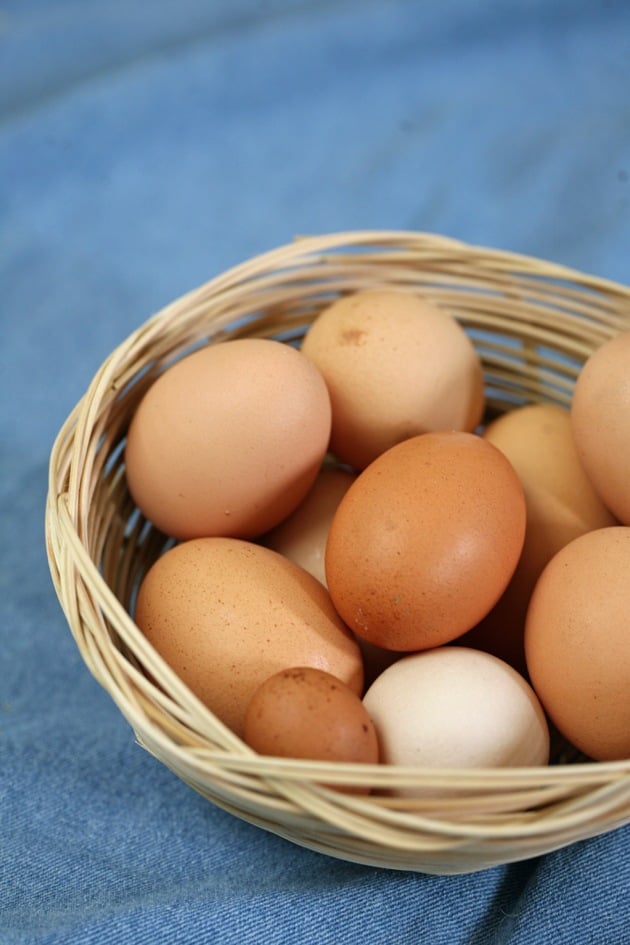
Black Australorp hens are amazing egg layers. The hens will start laying eggs at around 7 months old and you can trust that (given the right feed) they will give you an average of 250 eggs a year (about 5 eggs a week).
Black Australorp eggs are brown in color and medium in size. The eggs are rich and tasty (we love making shakshuka and Mediterranean egg salad with them).
Like most chicken breeds, their egg production starts to decline after a couple of years of laying eggs.
Black Australorp Meat…
Black Australorps are a heritage breed and a dual-purpose breed. They can be raised for both egg and meat production. If you are thinking about raising them for their meat, you’ll have to consider a few things.
First, they take a long time to reach maturity. Whereas it will take a meat breed like the Cornish Cross, for example, reach butchering size in 8 weeks, it takes Black Australorps 6 months to reach their full size.
Second, since they actually move (meat breeds are designed to be lazy and fat and sit by the feeder for most of the day) so their meat is a bit tougher.
Their skin is white and the meat is great and tastes just like any other chicken, however, it might require different cooking since it’s a bit tough. I usually skin my chickens when butchering them and then I process the meat in the pressure cooker to soften it before I use it in a recipe.
The great thing about raising Black Australorps for meat is that you can be totally self-sufficient. They can hatch their eggs and take care of their young so you can have a constant supply of chicken meat to can or freeze.
If you let your birds reach their full size a rooster will probably dress at around 5 or 6 lb and a hen will probably dress around 4 lb.
How to Care For Black Australorp Chickens…
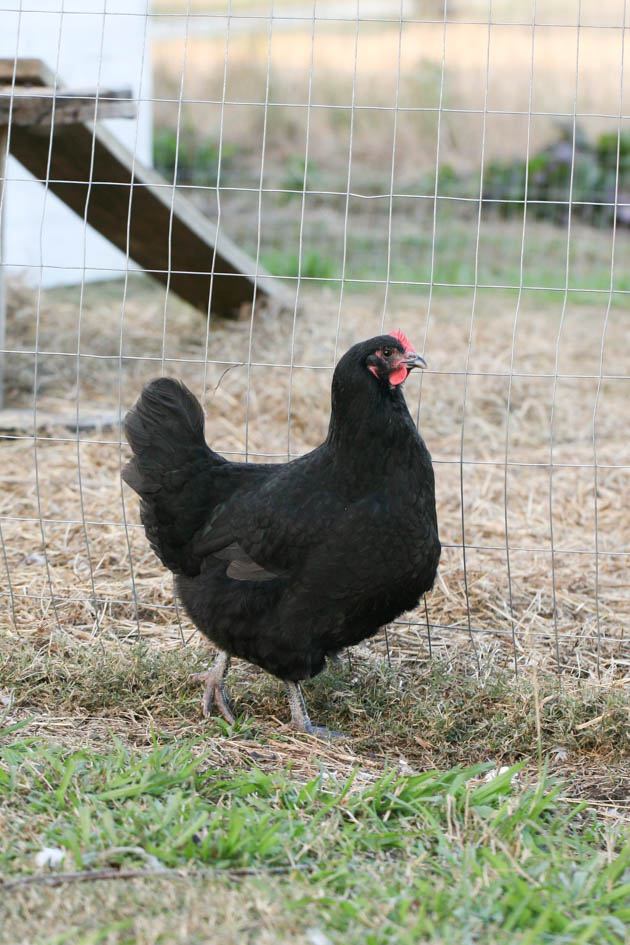
Black Australorps are very easy to care for. They have the basic needs that any other chicken has…
Shelter – they will need a coop that will protect them from rain and snow (I never heat my coop. They don’t have any problem handling the cold). Your coop should have comfortable nest boxes for them and roosting bars.
I built my simple coop from pallet wood and they love it.
Fence – if your chickens are not free-ranging, make sure that they have enough room in their fence. They are not lazy birds. They like to dig and move around so make sure that they have enough room to do that.
If you have a problem with chickens flying out of the fence you can always clip their wings.
Feed – choose feed that is suitable for laying hens and that has enough protein in it. I just feed the regular laying hen pellets from the local feed mill and I love mixing some whole corn in it since they seem to like it.
There are many different chicken feed recipes online and many non-GMO and organic types of feed. They can definitely eat that but I like to keep it simple.
Some homesteaders feed their chicken free choice, meaning that there is a feeder that is always full of feed and the chickens eat as much as they want. You can go this route or feed once or twice a day just make sure that you feed at least 1/4 pound of feed per chicken per day if they are fenced.
If your chickens free-range they won’t need much feed. They are great foragers and can pretty much take care of themselves. I still give them a little bit of feed every day to keep them used to me and to a routine.
If you want to learn more about feeding chickens, read this great article.
Oyster shell – this is a great supplement for Black Australorps since they lay many eggs. Crushed oyster shells can be given with the feed or in a separate container free-choice.
They are rich in calcium and will help the chicken lay eggs that have a stronger shell. They will also prevent the chickens from eating their own eggs, something that they sometimes do if their body is low on calcium.
Water – like all animals, Black Australorps need free access to clean water throughout the day.
Health issues – this is a very strong, hardy, and healthy breed. In all the years that I have raised them, I’ve never had one sick chicken. The usual attention to chicken parasites is a good idea always with any breed of chicken, but other than that they don’t require any special attention.
Are Black Australorp Chickens For You?
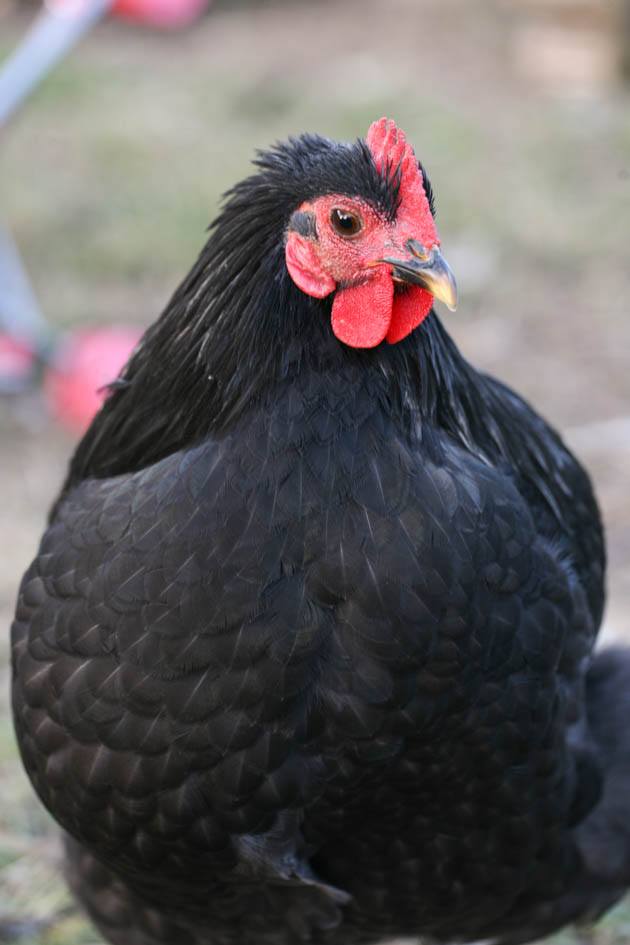
If you are looking for a friendly, calm, hardy, healthy breed of chickens that is a great egg layer, can hatch its own eggs, and care for its own young, then Black Australorps are for you.
There isn’t much (if anything) wrong with this breed of chicken. The only thing that I can think of is that their meat is a bit tougher than that of a meat breed. Other than that they are a great breed of chicken.
Since they are very easy to take care of and very friendly, they are a great breed of chicken for a beginner and a great breed for a family with young kids.
I hope that this post gave you enough information about Black Australorps. I really enjoy raising this breed. If you raise Black Australorps I’d love to hear your experience. And If you are considering this breed and have any questions please comment below!

Hi! I’m Lady Lee. I help homesteaders simplify their homesteading journey while still producing a ton of food! I am a single mother of four, I was born in Israel and raised in an agricultural commune called a Kibbutz. Now I homestead in central NC.

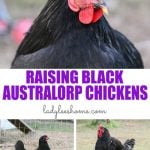
My daughter has a Black Australorps that’s 5 1/2 months old who is suddenly not running around like usual. I don’t know if she’s having her first egg or if she’s sick. What do I do? How do I tell and how long does she take to have the egg? I believe I’d have to separate the black australope and egg if that’s what’s happening from the other younger chicks? Thank you
I’m really not sure… Check to see if she is egg bound. This might be the issue. If not, I’d say separate her just in case there is a different health issue.
I learned a lot from this thank you very much
You are welcome!
Hi there! I was wondering if you could help with one question I have:
I’m trying to hatch australorp eggs in my incubator, and today is day 21. If they hatch on day 28, when do I stop turning them? Thanks!
I’ve never hatched eggs in an incubator so I am really not sure. I let my australorps hatch their own eggs.
3 days before hatching
Hi thanks for the info on those very beautiful birds. I plan to start my breed the new year 2023.
You are going to love them! They are very simple to keep.
I have two black Australorps (Hei Hei and Bernice) who are nearing 5 years old. When we got them as chicks we also got two Road Island Reds. And it’s funny because when you read about chicken breeds they say the Road Islands are supposed to be calm and docile, but compared to the Australorps they were both nuts! One was always a pecker and the other was scared of her own shadow. But the Australorps have such great personalities. We lost both of the Road Islands this year (one to predation – first time in five years I guess I should count myself lucky – and the other to old age). The Australorps are still going strong and I’ll never get another breed!
Mine are six years old! I’ll never get another breed either.
I agree, they are Sweeties!!!
First time chicken mom here and both of my black australorps vents aren’t covered in feathers like the other breeds we have (brahmas and orpingtons) – it almost looks like a monkey’s butt (for a lack of a better way of putting it). One seems to protrude out more than the other but they are both running around, chatting and eating normally. Is this something I should be concerned about. I appreciate your time and expertise.
If they are running around, behaving healthy, and aren’t in pain, I wouldn’t worry about it. The feathers might grow out soon.
I hatched 15 australops 14 weeks ago and I am so surprised at how extremely affectionate they are. They run for a cuddle and will perch on you with every chance they get!
They are great chickens! Especially if you raised them since they were babies, they’ll get really friendly.
I have a broody Australorp we are on day 23 of her sitting on the eggs. Everywhere on the internet it says 20-21 days for chicks to hatch. You say 28 days, is this specific to the Australorp’s? I don’t want to dispose of the eggs if I should give her more time.
She knows! Don’t move a thing. As far as I know, it’s 28 days but if I’m wrong, it doesn’t matter. The hen knows. As long as she sits there let her sit. If she senses that something is wrong she’ll leave the nest.
I just started with the Black Australorps. I also have the Barred Rock. I thought they make good friends with one another.
They are. I have one Barred Rock hen that has been living with the Black Australorps for years now! They get along very well.
Wonderful information, Lady Lee! We started with Australorps after adopting a young Australorp rooster who was dumped over someone’s fence. He was very friendly and sweet, and hung outside on the back porch where he could see us a lot of the day. We brought 3 Australorp hens to him as soon as possible, and he was overjoyed! (He also became very protective of them, and we definitely saw a personality shift as his allegiance switched from us to them. I suspect if he had been raised from them, it might have been different.)
The ladies have laid prolifically since they began this last November, and we have incubated 2 clutches of eggs since January, most of whom have/are going to friends. I anticipate some broodiness this spring, but I am hoping we can construct a nicer coop for them in the meantime, along with designating some safe space for broodies.
I think it is very serendipitous (in a God-orchestrated way) that we ended up with this breed, and we are hoping to be good stewards of what we have been given to care for. 🙂
They are beautiful birds!
Oh, they kinda chose you! They are great birds. Mine are six years old and still laying strong! I’m even taking eggs to the market this Saturday cause I have too many!